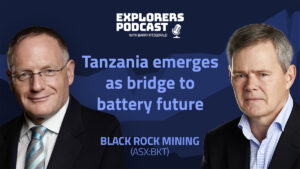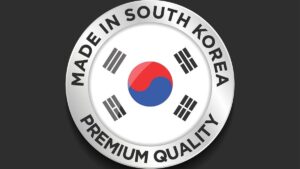MRC’s battery anode project to play key role in Europe’s EV ramp up

Pic: Getty Images
Special Report: Mineral Commodities’ (ASX:MRC) vertically integrated battery anode project in Norway will make serious money by targeting Europe’s booming lithium-ion sector, according to a new pre-feasibility study (PFS).
One of the world’s biggest car markets, Europe, is hellbent on fast-tracking the nascent electric vehicle ramp up as part of its economic recovery from the pandemic.
This includes building its own raw material supply chains – which is great news for Europe-focused battery metals stocks like MRC.
There’s over 557 gigawatt-hours (GWh) of battery manufacturing capacity in the pipeline across Europe, requiring over 450,000 tonnes per year of anode material.
Right now, it produces no anode material of its own.
For miner MRC, existing concentrate sales with steady cash flow from traditional graphite markets provide a de-risked transition to downstream anode production.
MRC’s Active Anode Materials Plant (AAMP) will initially produce up to 10,000tpa of active anode materials, using high quality graphite concentrate from MRC’s Skaland operations in Norway.
Production at Skaland will ramp-up from ~10,000tpa in 2020-2022 towards the 16,000tpa limit in 2023 to supply ‘Module 1’ of the AAMP.
This will then be expanded into two 20,000 tonne modules to process graphite concentrate from MRC’s Munglinup operations in Australia.
Two alternative environmentally friendly methods of purification – a caustic roast process and a carbochlorination process – both returned “highly compelling” economic outcomes.
Mining and selling a graphite concentrate to battery anode producers is far less profitable than making the anode material themselves.
MRC says the AAMP has a net present value (NPV) more than five times that of the mines, irrespective of whether purification uses caustic or carbochlorination.
All up, the caustic process has a net present value (NPV) of $US1bn ($1.37bn) and 67 per cent internal rate of return (IRR), while carbochlorination boasts an NPV and IRR of $US1.07bn ($1.47bn) and 58 per cent, respectively.
Both NPV and IRR are metrics used to assess the profitability of a project – the higher the number is above zero, the more profitable it will be.
Total development costs for the integrated project come to $US313m for caustic purification and $US383m for carbochlorination.
And average prices for AAMP products of ~$US5,907/t will far outstrip project operating costs of $US1,610 (caustic) and $US1,206 (carbochlorination).
First production from a ‘single train’ (2GWh) is planned for mid-2022, with initial production from the first full module slated for the September quarter 2023.
MRC exec chairman Mark Caruso says a vertically integrated graphite business — from mine through to production of active anode materials — will ensure a consistent high-quality, low-emission product is delivered to its customers in Europe.
“This will be achieved through an integrated operations approach from mine planning and scheduling and concentrate production, through to AAMP operations management,” he says.
“Our strategy is highly complementary to the European policy agenda, where the strategic focus is on securing local critical raw material supply chains and delivering them sustainably.
“By building the AAMP in Norway we can leverage factors such as localisation, skilled labour, and low-cost renewable energy on the doorstep of the fastest adopters of zero-emission policies anywhere on the planet.”
This story was developed in collaboration with Mineral Commodities, a Stockhead advertiser at the time of publishing.
This story does not constitute financial product advice. You should consider obtaining independent advice before making any financial decisions.
Related Topics

UNLOCK INSIGHTS
Discover the untold stories of emerging ASX stocks.
Daily news and expert analysis, it's free to subscribe.
By proceeding, you confirm you understand that we handle personal information in accordance with our Privacy Policy.








